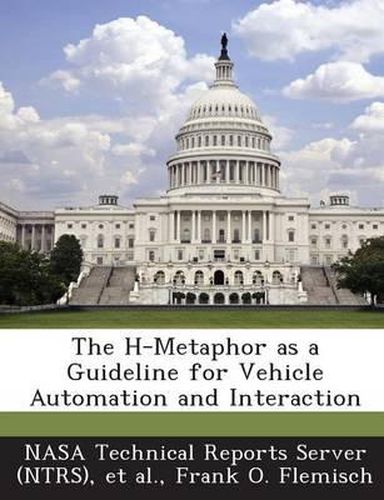Readings Newsletter
Become a Readings Member to make your shopping experience even easier.
Sign in or sign up for free!
You’re not far away from qualifying for FREE standard shipping within Australia
You’ve qualified for FREE standard shipping within Australia
The cart is loading…






Good design is not free of form. It does not necessarily happen through a mere sampling of technologies packaged together, through pure analysis, or just by following procedures. Good design begins with inspiration and a vision, a mental image of the end product, which can sometimes be described with a design metaphor. A successful example from the 20th century is the desktop metaphor, which took a real desktop as an orientation for the manipulation of electronic documents on a computer. Initially defined by Xerox, then refined by Apple and others, it could be found on almost every computer by the turn of the 20th century. This paper sketches a specific metaphor for the emerging field of highly automated vehicles, their interactions with human users and with other vehicles. In the introduction, general questions on vehicle automation are raised and related to the physical control of conventional vehicles and to the automation of some late 20th century vehicles. After some words on design metaphors, the H-Metaphor is introduced. More details of the metaphor’s source are described and their application to human-machine interaction, automation and management of intelligent vehicles sketched. Finally, risks and opportunities to apply the metaphor to technical applications are discussed.
$9.00 standard shipping within Australia
FREE standard shipping within Australia for orders over $100.00
Express & International shipping calculated at checkout
Good design is not free of form. It does not necessarily happen through a mere sampling of technologies packaged together, through pure analysis, or just by following procedures. Good design begins with inspiration and a vision, a mental image of the end product, which can sometimes be described with a design metaphor. A successful example from the 20th century is the desktop metaphor, which took a real desktop as an orientation for the manipulation of electronic documents on a computer. Initially defined by Xerox, then refined by Apple and others, it could be found on almost every computer by the turn of the 20th century. This paper sketches a specific metaphor for the emerging field of highly automated vehicles, their interactions with human users and with other vehicles. In the introduction, general questions on vehicle automation are raised and related to the physical control of conventional vehicles and to the automation of some late 20th century vehicles. After some words on design metaphors, the H-Metaphor is introduced. More details of the metaphor’s source are described and their application to human-machine interaction, automation and management of intelligent vehicles sketched. Finally, risks and opportunities to apply the metaphor to technical applications are discussed.